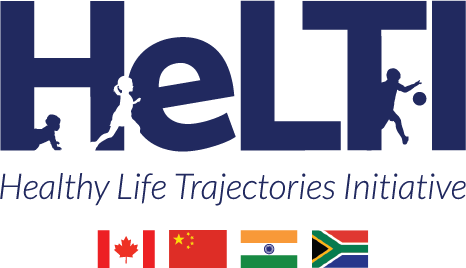 The application of DOHaD principles enables the development of ‘smart’ lifestyle interventions, adapted to different contexts, and focused toward preventing the increasing rates of adiposity/obesity and NCDs, and their intergenerational transmission. Opportunities in populations at the beginning of their economic and urban transition include interventions to prevent maternal, fetal and infant underweight. This is done by improving maternal and infant diet quality, and by optimizing childhood diet, growth, body composition and physical activity. In populations that are further advanced on the transition pathway, opportunities include interventions to reduce maternal adiposity, gestational weight gain and GDM, and optimize maternal, infant and child diet quality, nutrient status, growth, body composition and physical activity.
The application of DOHaD principles enables the development of ‘smart’ lifestyle interventions, adapted to different contexts, and focused toward preventing the increasing rates of adiposity/obesity and NCDs, and their intergenerational transmission. Opportunities in populations at the beginning of their economic and urban transition include interventions to prevent maternal, fetal and infant underweight. This is done by improving maternal and infant diet quality, and by optimizing childhood diet, growth, body composition and physical activity. In populations that are further advanced on the transition pathway, opportunities include interventions to reduce maternal adiposity, gestational weight gain and GDM, and optimize maternal, infant and child diet quality, nutrient status, growth, body composition and physical activity.
Few intervention studies have been designed to look at non-communicable disease risks with a longitudinal and multi sectoral perspectives.
The HeLTI interventions address multiple adverse early life exposures across the entire developmental period, spanning preconception, pregnancy, infancy and childhood. By starting the interventions preconceptionally, HeLTI aims to ensure that undernourished mothers are as nutritionally replete as possible when they enter pregnancy, and that overweight or obese women have time to achieve a more optimal body weight and/or metabolic fitness prior to pregnancy. Interventions are integrated into packages based on the principles of nurturing care (covering health, nutrition, education, child protection and social protection) in order to achieve the following:
- Optimize maternal nutritional status, body composition and physical activity before and during pregnancy and lactation
- Prevent maternal, fetal and infant infection, toxin exposures and stress
- Optimize infant and child diet and feeding practices, and physical activity
- Promote parenting skills and nurturing care
The time-sensitive interventions are tailored to target the specific risks and needs in each population, ensure they are culturally-appropriate, and are underpinned by behavior change theory. The interventions mainly focus on mothers, but will also recognize the essential role of partners, families and communities in supporting optimal early child development.


